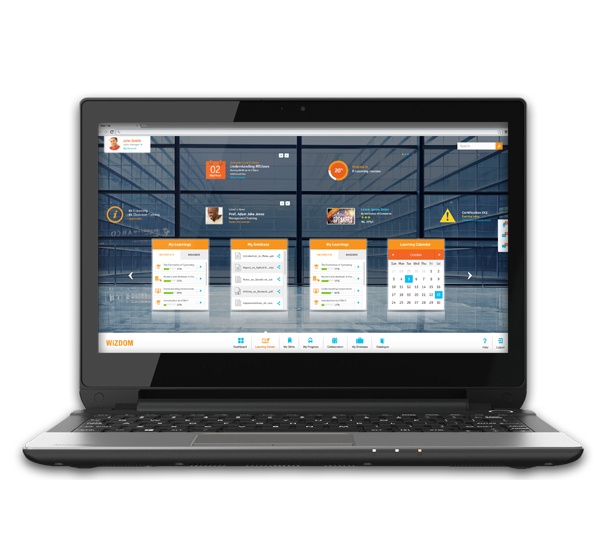Learner Dashboards Create Learner Centric LMS
Modern LMSs not only provide the learners access to training content as per their needs, they also make sure that the learning remains relevant. They do so by extensive content catalogues, which are searchable and make sure that the learner can quickly arrive at the required information. The reporting function of new age LMSs makes sure that there is room for customized reports that the learners can also utilize to take control of their learning. Thus the LMS is not just a passive platform any more, but strives to be more learner-centric in order to be truly effective.
Learner dashboards are an intuitive way of providing the most important set of information on the LMS interface – so that the learners are aware of their progress every time they log on to the system. Here is how a Learner dashboard looks (see image below), encapsulating the progress of the learner through multiple courses, showcasing cumulative progress as per the entire learning curriculum, as well as presenting a learning calendar to plan for trainings as per individual schedule.
An effective LMS dashboard enables learners to visually grasp the relevant and current learning content as well as keep a close eye on their performance. It helps them manage their time to be spent on learning and thus achieve learning objectives better. For administrators and managers, it provides an added way of making sure that the learners are duly motivated for learning. For the organizations, it is a step closer to achieving business goals out of the LMS and attaining a positive ROI on the learning initiative.
Here are a few Do’s and Don’ts when designing a learner-centric dashboard for an enterprise-wide LMS.
- Choose relevant metrics.
There is a lot of information that is captured by the LMS. It is important to choose the metrics that truly benefits the learner and positively improves their experience. Insufficient information does not quench the learners’ expectation from a dashboard and too much information creates unnecessary clutter. Also, the chosen metrics should be aligned to the learning objectives and help the overall aim of the learning initiative. - Updated and current information.
It is also critical that the information is updated real time. Then only can a dashboard be utilized effectively. This is not a tough task as the chunk of the information displayed on the dashboard is churned out of the LMS itself. Even if some of it is linked to other systems within the organization like the HRMS, make sure to keep information channels open for current and relevant information display on the dashboard. - Visuals are important.
Good and effective dashboards are easy on the eyes. When designing dashboards, it is important to use the right colors, shapes, lines, shading and any other tools that heighten visual perception. The things to be avoided include inappropriate or frivolous graphics that take away from the learning experience or use visuals types that are not commonly seen. Effective dashboards usually have a lot of visual representation of data like bar graphs, line graphs or scatterplots. They are informative and everyone knows how to read them. So resist using other types which are not so uncommon, as many learners may not be able to understand them at all. - Simple accessibility and use.
Also, the learner dashboard should be displayed at a prominent section of the interface – preferably the homepage -- so that the learners get a quick recap of where they are and their preferred routes within the system. The learner may not spend quality time going through the metrics every time, but a quick look on upcoming training events or new content on the system can be helpful in deciding their preferred learning path. - Build in interactivity.
With filters and different views, the learners can be given the option of customizing the data presented as per their needs. This will increase the utility of the dashboard and increase the learner’s engagement with the platform as a whole. If the option of customization of data seems too much, simple things like customized skins and different color options can also make the dashboard more appealing to the learners and help remove any resistance that may arise due to the ‘newness’ of the initiative or its perceived worth among the learners.
A learning management system brings along with it size-able investments, and proactive efforts towards making it learner-centric is a step towards achieving a positive ROI. Learner dashboards are definitely a step towards making a LMS more learner-centric and useful for all stakeholders within the organization.

